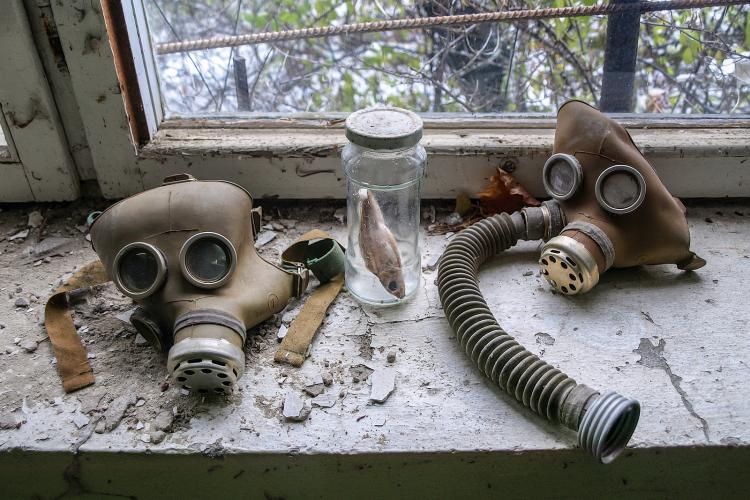
Chernobyl, byword for nuclear disaster, was key to Putin’s invasion plan

A Ukrainian presidential adviser said on Friday that Russian forces had wrested control of Chernobyl, site of the worst nuclear disaster in history, following an intense battle with Ukrainian troops.
Adviser Myhailo Podolyak told The Associated Press that Ukrainian authorities did not know the current condition of the facilities at Chernobyl.
“After the absolutely senseless attack of the Russians in this direction, it is impossible to say that the Chernobyl nuclear power plant is safe,” he said.
Ukrainian President Volodymyr Zelenskyy had said on Thursday that Russian forces were trying to seize the Chernobyl nuclear plant.
Shortest Route to Kyiv
Chernobyl sits on the shortest route from Belarus to Kyiv, Ukraine’s capital, and so runs along a logical line of attack for the Russian forces invading the country.
In seizing Chernobyl, Russia simply used the fastest invasion route from Belarus, an ally of Moscow and a staging ground for Russian troops, to Kyiv, according to western military analysts.
According to Jack Keane, a former chief of the US Army staff, Chernobyl “doesn’t have any military significance” but sits on the shortest route from Belarus to Kyiv, the target of a Russian “decapitation” strategy to oust the Ukrainian government.
Disaster Zone to Tourist Area
The fourth reactor at Chernobyl, around 110 kilometres north of Kyiv, exploded in April 1986 during a botched safety test, sending a radioactive plume billowing across much of Europe and reaching the eastern United States.
Estimates for the numbers of direct and indirect deaths from the disaster vary from the low thousands to as many as 93,000 extra cancer deaths worldwide.
Soviet authorities initially sought to cover up the disaster and did not admit to the explosion.
A make-shift cover, or “sarcophagus”, was built within six months of the disaster to cover the stricken reactor and protect the environment from radiation.
In 2011, Ukraine opened up the sealed zone around the Chernobyl reactor to tourists wishing to learn more about the 1986 tragedy.
In November 2016, a so-called “New Safe Confinement” was moved over the old sarcophagus.
In 2019 Ukraine’s president Volodymyr Zelenskyy said the area surrounding Chernobyl would be turned into a tourist site.
“Chernobyl has been a negative part of Ukraine’s brand,” Zelenskyy said. “The time has come to change this.”
“We will create a green corridor for tourists. Chernobyl is a unique place on the planet where nature [has been] reborn after a huge man-made disaster. We have to show this place to the world: to scientists, ecologists, historians [and] tourists,” he added.

